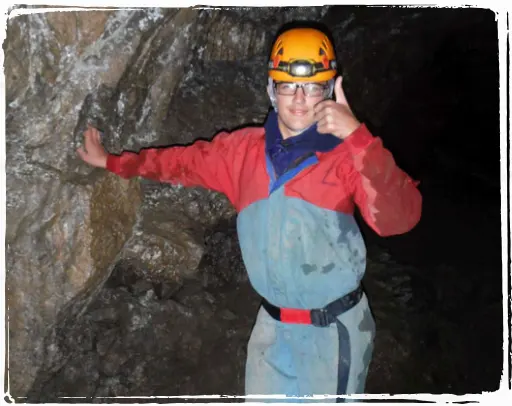LOCATION
Bewerley Park
DURATION
5 Days| 4 Nights
ACCOMMODATION
From 20 to 144 people

disover hidden depths
Middle Earth is truly here to explore in the Yorkshire Dales. Our five-day Summit to Stalagmite Discoverer course is the ultimate way to give students the unique opportunity to explore the dales and learn its history.
From its fascinating gritstone rocks to its natural deep underground cave systems, natural gorges of pools and waterfalls, and its old limestone underground tunnels that were once mined to the summit of a mountain hilltop, students will be encouraging each other each step of the way – making new friendships and creating memoires for a lifetime along the way.
Itinerary
This is an example of an activity package and not a certainty, the Outdoor Education team will build you a specific programme of activities based on conversations with you.
Students go out on activity in groups of 12 so, depending on the number of students on adventure with us – and weather conditions, the order of activities may vary.
MONDAY
Arrive and unpack

Weasling

Nightline
TUESDAY

Caving
Evening Activity
WEDNESDAY

Mountain Adventure
Evening Activity
THURSDAY

Mining

River Scramble
Evening Activity
FRIDAY

High Ropes
Pack and depart

Stories to share and remember
What’s Included?
Once you arrive at our outdoor education centres, everything is included:
Visiting teachers stay free
For every 12 students booked, one visiting teacher stays free of charge + one more extra for the whole group.
All specialist equipment
All sporting equipment and adventure specific helmets and harnesses.
Accommodation
Accommodation for the duration of the visit.
Bedding and linen
Pillows, sheets, duvets, and blankets are all provided.
Specialist clothing
Waterproofs, wellies and wetsuits, when required. Ideally students should bring their own wellies, but we have plenty on hand to lend.
Transport
Once at the centre, all transport to and from adventure activities is provided.
Experienced, full-time, outdoor teachers and tutors
Each group of 12 students is led by a fully qualified and experienced outdoor tutor.
Resources
Everything you need to know about booking and staying with Outdoor Education North Yorkshire.
Curriculum Links
A meaningful residential visit isn’t only about having fun, making new friends, building confidence, learning to work together as a team, and developing an appreciation for our natural environment… it’s also about weaving interesting content into outdoor activities that enrich the curriculum which benefits students when they are back in the classroom.
Rock Climbing
Geography
Students will learn about the formation of the environment; how valleys, hills, moorlands, and the coastline are shaped, and how this is sped up by human impact or environmental changes.
Geography: Glaciation
As part of a weasling session, students can learn about the formation of the landscapes around them, and the part glaciers had to play. They can also learn all about what these landscapes now offer, their uses, and how use conflicts can be managed.
Science
The group will study key features of the rocks they are climbing on. They will learn how to recognise whether they are igneous, sedimentary, or metamorphic rocks, and understand the process of their formation.
Caving
Geography: Geology
In this amazing underworld environment, students will learn about how these caves were formed, limestone and its properties, and the process of erosion and its ongoing development.
History
Students will learn about the history of caves and mankind’s relationship with them – how they have been used over a millennium from mine development, to shelters, and burials.
Mountain Activity
Geography: Maps
Students can use ordinance survey maps to navigate their way around the hills. They can be introduced to key features and their use in navigation such as scale, contours, and rights of way. Discussion can also be had about why maps like these are used rather than using other options such as aerial photographs.
Geography: Glacial landscapes
Hill walking is an ideal way to explore glacial landscapes. Key features of these landscapes can be identified and land use observed.
Geography: Climate change
Climate change affects us all. When walking in the hills evidence of its effects can be seen first-hand, explored, and discussed. The hills can be an excellent vantage point to see the impact humans are having on our climate.
Science: Earth and atmosphere
Whilst on the hills it is inevitable that different types of rock will be found. These can be introduced along with their properties, and a discussion on the rock cycle can form a part of the discovery. Soil types can also be discussed and peat, in particular, on how it is a large carbon store and the impact that releasing CO2 has on the environment.
English: Arguments
Students can be taught about some of the land uses in the national park – pros, cons, and reasons why. With this knowledge, they can form into groups and In groups and create persuasive arguments for and against these land uses.
Mining
Science: Earth, atmosphere, and rocks
Students can learn about what rock or mineral was mined, how it was formed, the considerations needed to be made with surrounding rocks, and the rock cycle itself.
Geography: Human
Students can learn about the effect that the mine and mining had on the dales and moorland environments, the impact on the countryside, its legacy, and the settlements that still exist today because of it.
Hazards
Natural hazards are part of the GCSE curriculum. Students will spend time talking about these hazards and exploring how they have shaped our environment and the impact of man on these environments. They can discuss how some of these hazards are shaped naturally and are still changing, and the dangers this presents.
River Scramble
Geography: Weather
Students will learn to consider the weather and the effects it will have on the activity and the venue. They will learn about forecasting, where to find a forecast, and where our weather comes from.
Geography: Rivers
Students will be in a youthful part of the river where they can learn all about its formation, characteristics, and the erosion that is taking place today changing the landscape.
Science: Geology
The group will learn to identify rock types and the effects of erosion in the forming of gorges and valleys.
Orienteering
Geography
KS3: Students can be introduced to orienteering maps, their key features, scales, and uses. They will then be taught how to start using these as an important tool in navigation and identifying the surrounding area to them.
KS4: Taking orienteering to the next level, students will work in a more open and mountainous environment. They will learn to read contour lines and what has created and shaped the land, whilst searching for markers in a more competitive setting.
Maths: Ratio and proportions
Scales can be used from the maps to measure the distance of the course to be completed. Times can then be estimated based on speed. The legs of the course can be broken down into sections, and ratios applied to the times or distance of each leg.
P.E.
Orienteering can be a competitive sport and students will have the opportunity to learn how to take part in a team, and as individuals, using tactics, map knowledge, and learning to pace themselves to complete the course.
LOCATION: Bewerley Park
DURATION: 5 Days | 4 Nights
ACCOMMODATION: From 20 to 144 people
highs to hidden depths
Middle Earth is truly here to explore in the Yorkshire Dales. Our five-day Summit to Stalagmite Discoverer course is the ultimate way to give students the unique opportunity to explore the dales and learn its history.
From its fascinating gritstone rocks to its natural deep underground cave systems, natural gorges of pools and waterfalls, and its old limestone underground tunnels that were once mined to the summit of a mountain hilltop, students will be encouraging each other each step of the way – making new friendships and creating memoires for a lifetime along the way.
Itinerary
The combination of activities in the following itinerary have been carefully chosen to bring out the best of real outdoor education adventure, in autumn and winter, for students in Years 8 to 11.
Please let us know when making your booking if you would like any of the activates changed or if you have any specific curriculum themes you would like us to focus on. Students go out on activity in groups of 12 so, depending on the number of students on adventure with us – and weather conditions, the order of activities may vary.
MONDAY

Arrive and Unpack | Weasling | Evening Activity
TUESDAY

Caving | Evening Activity
WEDNESDAY

Mountain Adventure | Evening Activity
THURSDAY

Mining | River Scramble | Night Activity
FRIDAY

Orienteering | Pack and Depart | Great Time to Remember
What’s Included?
Once you arrive at our outdoor education centres, everything is included:
Visiting teachers stay free
For every 12 students booked, one visiting teacher stays free of charge + one more extra for the whole group.
All specialist equipment
All sporting equipment and adventure specific helmets and harnesses.
Accommodation
Accommodation for the duration of the visit.
Food
Three meals a day, except for day of arrival and departure.
Bedding and linen
Pillows, sheets, duvets, and blankets are all provided.
All specialist clothing
Waterproofs, wellies and wetsuits, when required. Ideally students should bring their own wellies, but we have plenty on hand to lend.
Transport
Once at the centre, all transport to and from adventure activities is provided.
Experienced, full-time, outdoor teachers and tutors
Each group of 12 students is led by a fully qualified and experienced outdoor tutor.
Curriculum Links
A meaningful outdoor education adventure isn’t just about fun and games. It’s about weaving content into each adventurous activity that will benefit students when back in the classroom…and in the wider world.
The activties included in the Summit to Stalagmite programme supports the KS3 and KS4 curriculum in the follwing ways:
Rock Climbing
Geography
Students will learn about the formation of the environment; how valleys, hills, moorlands, and the coastline are shaped, and how this is sped up by human impact or environmental changes.
Geography: Glaciation
As part of a weasling session, students can learn about the formation of the landscapes around them, and the part glaciers had to play. They can also learn all about what these landscapes now offer, their uses, and how use conflicts can be managed.
Science
The group will study key features of the rocks they are climbing on. They will learn how to recognise whether they are igneous, sedimentary, or metamorphic rocks, and understand the process of their formation.
Caving
Geography: Geology
In this amazing underworld environment, students will learn about how these caves were formed, limestone and its properties, and the process of erosion and its ongoing development.
History
Students will learn about the history of caves and mankind’s relationship with them – how they have been used over a millennium from mine development, to shelters, and burials.
Mountain Adventure
Geography: Maps
Students can use ordinance survey maps to navigate their way around the hills. They can be introduced to key features and their use in navigation such as scale, contours, and rights of way. Discussion can also be had about why maps like these are used rather than using other options such as aerial photographs.
Geography: Glacial landscapes
Hill walking is an ideal way to explore glacial landscapes. Key features of these landscapes can be identified and land use observed.
Geography: Climate change
Climate change affects us all. When walking in the hills evidence of its effects can be seen first-hand, explored, and discussed. The hills can be an excellent vantage point to see the impact humans are having on our climate.
Science: Earth and atmosphere
Whilst on the hills it is inevitable that different types of rock will be found. These can be introduced along with their properties, and a discussion on the rock cycle can form a part of the discovery. Soil types can also be discussed and peat, in particular, on how it is a large carbon store and the impact that releasing CO2 has on the environment.
English: Arguments
Students can be taught about some of the land uses in the national park – pros, cons, and reasons why. With this knowledge, they can form into groups and In groups and create persuasive arguments for and against these land uses.
Mining
Science: Earth, atmosphere, and rocks
Students can learn about what rock or mineral was mined, how it was formed, the considerations needed to be made with surrounding rocks, and the rock cycle itself.
Geography: Human
Students can learn about the effect that the mine and mining had on the dales and moorland environments, the impact on the countryside, its legacy, and the settlements that still exist today because of it.
Hazards
Natural hazards are part of the GCSE curriculum. Students will spend time talking about these hazards and exploring how they have shaped our environment and the impact of man on these environments. They can discuss how some of these hazards are shaped naturally and are still changing, and the dangers this presents.
River Scramble
Geography: Weather
Students will learn to consider the weather and the effects it will have on the activity and the venue. They will learn about forecasting, where to find a forecast, and where our weather comes from.
Geography: Rivers
Students will be in a youthful part of the river where they can learn all about its formation, characteristics, and the erosion that is taking place today changing the landscape.
Science: Geology
The group will learn to identify rock types and the effects of erosion in the forming of gorges and valleys.
Orienteering
Geography
KS3: Students can be introduced to orienteering maps, their key features, scales, and uses. They will then be taught how to start using these as an important tool in navigation and identifying the surrounding area to them.
KS4: Taking orienteering to the next level, students will work in a more open and mountainous environment. They will learn to read contour lines and what has created and shaped the land, whilst searching for markers in a more competitive setting.
Maths: Ratio and proportions
Scales can be used from the maps to measure the distance of the course to be completed. Times can then be estimated based on speed. The legs of the course can be broken down into sections, and ratios applied to the times or distance of each leg.
P.E.
Orienteering can be a competitive sport and students will have the opportunity to learn how to take part in a team, and as individuals, using tactics, map knowledge, and learning to pace themselves to complete the course.
Resources
Everything you need to know about booking and staying with Outdoor Education North Yorkshire.
Learning Outcomes
PERSONAL GROWTH
Building perseverance, resilience, and determination, students will learn how to step out of their comfort zone by pushing past limits to reach the top of the hill, getting into cold water, and facing a fear or two when entering the mouth of a dark cave.
SOCIAL SKILLS
To get the whole group through the maze of rocks, to the top of the climb, and then through deep underground tunnels, students will have to pull together as a team. They may have to physically help each other with obstacles, guide each other through tricky sections, and encourage each other.
ENVIRONMENTAL AWARENESS
Travel Times
Dumfries
2 Hours 40 Minutes
Manchester
1 Hour 50 Minutes
York
1 Hour 10 Minutes
Leeds
1 Hour
Harrogate
30 Minutes
Dumfries
2 Hours 40 Minutes
Manchester
1 Hour 50 Minutes
York
1 Hour 10 Minutes
Leeds
1 Hour
Harrogate
30 Minutes